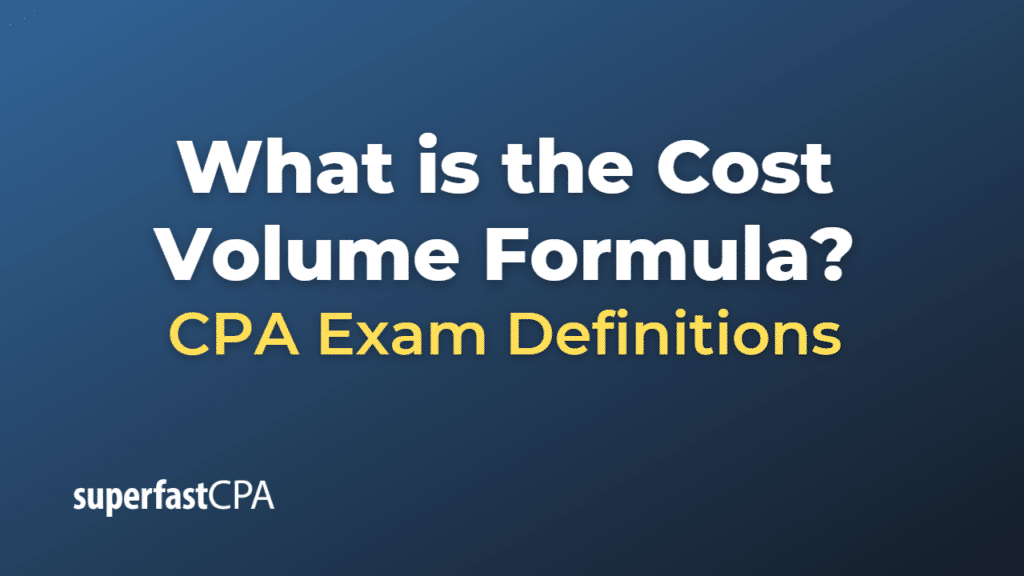Cost Volume Formula
The Cost-Volume-Profit (CVP) analysis is a method used in managerial economics to identify the levels of operating activity needed to avoid losses, achieve targeted profits, plan future activities, and monitor organizational performance.
One of the key components of CVP analysis is the break-even point, which is the point at which total revenue equals total costs (both variable and fixed), meaning the company is not making a profit, but is also not incurring any losses. The formula to calculate the break-even point in units is:
\(\text{Break-Even Point (in units)} = \frac{\text{Fixed Costs}}{\text{Contribution Margin per Unit}} \)
The Contribution Margin per Unit is calculated by subtracting the Variable Cost per Unit from the Selling Price per Unit.
If you want to calculate the break-even point in sales dollars, the formula is:
\(\text{Break-Even Point (in dollars)} = \frac{\text{Fixed Costs}}{\text{Contribution Margin Ratio}} \)
The Contribution Margin Ratio is calculated by dividing the Contribution Margin per Unit by the Selling Price per Unit.
Remember, the CVP analysis is a simplification and assumes that the per-unit variable cost and total fixed costs are constant, which is not always the case in real-world scenarios. However, it can still provide useful estimates for decision-making purposes.
Example of the Cost Volume Formula
Let’s use an example to illustrate the cost-volume-profit (CVP) analysis.
Suppose a company manufactures and sells a single product. The selling price per unit of the product is $50, and the variable cost per unit (direct materials, direct labor, etc.) is $20. This means the contribution margin per unit (Selling Price – Variable Cost) is $30.
The company also has fixed costs (rent, salaries, etc.) that amount to $60,000.
To calculate the break-even point in units, we use the formula:
\(\text{Break-Even Point (in units)} = \frac{\text{Fixed Costs}}{\text{Contribution Margin per Unit}} \)
\(= \frac{\$60,000}{\$30} \)
\(\text{= 2,000 units} \)
This means the company needs to sell 2,000 units of the product to cover all its costs and to break even.
To calculate the break-even point in sales dollars, we first calculate the contribution margin ratio:
\(\text{Contribution Margin Ratio} = \frac{\text{Contribution Margin per Unit}}{\text{Selling Price per Unit}} \)
\(= \frac{\$30}{\$50} \)
\(= 0.6 \)
Then, we use the formula:
\(\text{Break-Even Point (in dollars)} = \frac{\text{Fixed Costs}}{\text{Contribution Margin Ratio}} \)
\(= \frac{\$60,000}{0.6} \)
\(= \$100,000 \)
This means the company needs to achieve $100,000 in sales to cover all its costs and to break even.
These calculations can help the company plan its production and sales targets, price its products, and make other strategic decisions.













